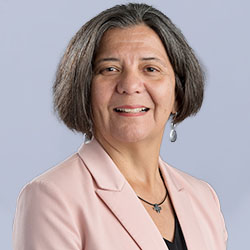
After the Affordable Care Act (ACA) passed, California boldly embraced the opportunity to dramatically increase the number of Californians who have health coverage. The progress made in our state has been enormous. As a result of the ACA, more than five million people have gained health insurance, and we have cut in half the share of California’s population that remains uninsured.
Even with that progress, three million Californians lack health coverage. For the time being, they will not be seeing any relief. Despite strong political momentum, a thriving economy, and a significant budget surplus, the governor and the California legislature finalized a budget for the next fiscal year that provides no direct help to Californians who are ineligible for coverage.
Given what it means for a person to live without health insurance, it is regrettable that state policymakers missed this opportunity to expand coverage. I believe that our goal of universal coverage has enduring importance, and that California is positioned to make additional gains in the foreseeable future.
The Human Cost of Being Uninsured
The negative effects of living without health insurance are well known: stress, undiagnosed disease, delayed care, medical debt, lost days at work and school, and early and avoidable deaths. In California, those who are most likely to be uninsured are undocumented, low-income, and Latino. Even though 68% of undocumented adults with low incomes are employed (PDF), they earn low wages in jobs without health insurance benefits. We also know that affordability is the top reason that people who are eligible for health plans through Covered California lack insurance. (Of note, I am a member of Covered California’s board of directors.) In a state struggling with widespread economic inequality, we must stay focused on the lack of access to health care as one of the biggest inequities. The demographics of the uninsured hew closely to the lines of race and income.
The governor and the legislature could have crafted a budget funding the expansion of Medi-Cal eligibility to include undocumented young adults and seniors with low incomes. They also could have increased subsidies that would make Covered California health plans more affordable. The final budget does neither.
All state budgets are a product of compromise and trade-offs. They are never perfect. Still, this year’s budget will have very human consequences — at least in the short term. In California, too many of our brothers and sisters will experience avoidable illnesses and die at a younger age because they cannot afford health insurance. That is what makes universal coverage such an urgent goal.
The Path Ahead
While there has been vigorous debate about how California can establish universal coverage, the common ground on both sides of the debate reveals widespread support in our state for reaching that goal. Favorable voter sentiment drove unprecedented activity in universal coverage throughout this legislative session. Health coverage has also been one of the top issues for candidates and voters in this election campaign season. Together, we must carry that momentum forward into the next phase of state policymaking — and there are opportunities.
Despite the disappointments in the final budget, the spending plan does map out new potential pathways to universal coverage. The budget includes $5 million for a new, independent council to study how the state can get to universal coverage, building on the work legislators did this year to develop policy solutions. That includes the Assembly’s recent Select Committee on Health Care Delivery Systems and Universal Coverage, which recommended important short- and long-term steps to achieving universal coverage. The budget also directs Covered California next year to present to the legislature with options for improving affordability in the individual market.
Both measures will help to ensure continued dialogue around coverage expansion. For the millions among us who remain uninsured — people we encounter as we move through our daily lives — we must be prepared to take full advantage of this opportunity.
It is worth noting that the budget uses part of this year’s surplus to boost programs that directly help Californians with low incomes. The budget includes emergency aid to help local governments address homelessness, increased funding for cash assistance to help lift Californians with low incomes out of poverty, and funding to expand eligibility for the state’s earned income tax credit. The budget also includes money to strengthen California’s health care workforce, which is necessary to expand access and make health care more affordable. For more information on health-related provisions in this year’s budget, I recommend this summary from the Insure the Uninsured Project.
The Finish Line Is Near
Thanks to the ACA, California is closer than ever to making sure all our residents are covered. It took advocates, policymakers, and communities decades of persistence to get our state this far.
It’s heartening that the finish line is within sight, but close is not good enough for the three million Californians who remain without coverage and access to care. For them, we must remain resolute in our determination to cross the finish line and cover everyone.
Authors & Contributors




